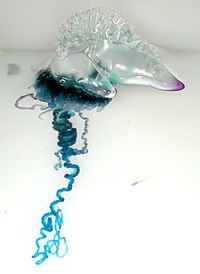
Photo from wikipedia
α-Dicarbonyl compounds (α-DCs) are readily produced during the heating and storage of foods, mainly through the Maillard reaction, caramelization, lipid-peroxidation, and enzymatic reaction. They contribute to both the organoleptic properties… Click to show full abstract
α-Dicarbonyl compounds (α-DCs) are readily produced during the heating and storage of foods, mainly through the Maillard reaction, caramelization, lipid-peroxidation, and enzymatic reaction. They contribute to both the organoleptic properties (i.e., aroma, taste, and color) and deterioration of foods and are potential indicators of food quality. α-DCs are also important precursors to hazardous substances, such as acrylamide, furan, advanced lipoxidation end products, and advanced glycation end products, which are genotoxic, neurotoxic, and linked to several diseases. Recent studies have indicated that dietary α-DCs can elevate plasma α-DC levels and lead to "dicarbonyl stress." To accurately assess their health risks, quantifying α-DCs in food products is crucial. Considering their low volatility, inability to absorb ultraviolet light, and high reactivity, the analysis of α-DCs in complex food systems is a challenge. In this review, we comprehensively cover the development of scientific approaches, from extraction, enrichment, and derivatization, to sophisticated detection techniques, which are necessary for quantifying α-DCs in different foods. Exposure to α-DCs is inevitable because they exist in most foods. Recently, novel strategies for reducing α-DC levels in foods have become a hot research topic. These strategies include the use of new processing technologies, formula modification, and supplementation with α-DC scavengers (e.g., phenolic compounds). For each strategy, it is important to consider the potential mechanisms underlying the formation and removal of process contaminants. Future studies are needed to develop techniques to control α-DC formation during food processing, and standardized approaches are needed to quantify and compare α-DCs in different foods.
Journal Title: Comprehensive reviews in food science and food safety
Year Published: 2023
Link to full text (if available)
Share on Social Media: Sign Up to like & get
recommendations!